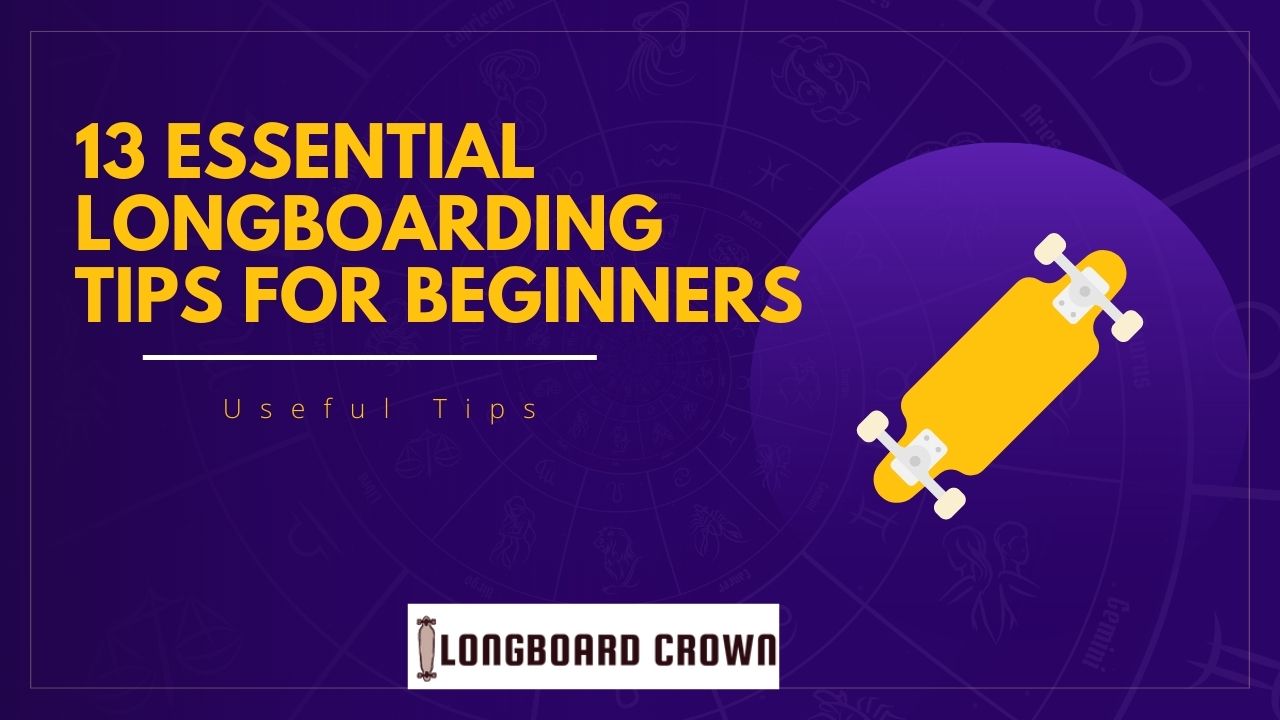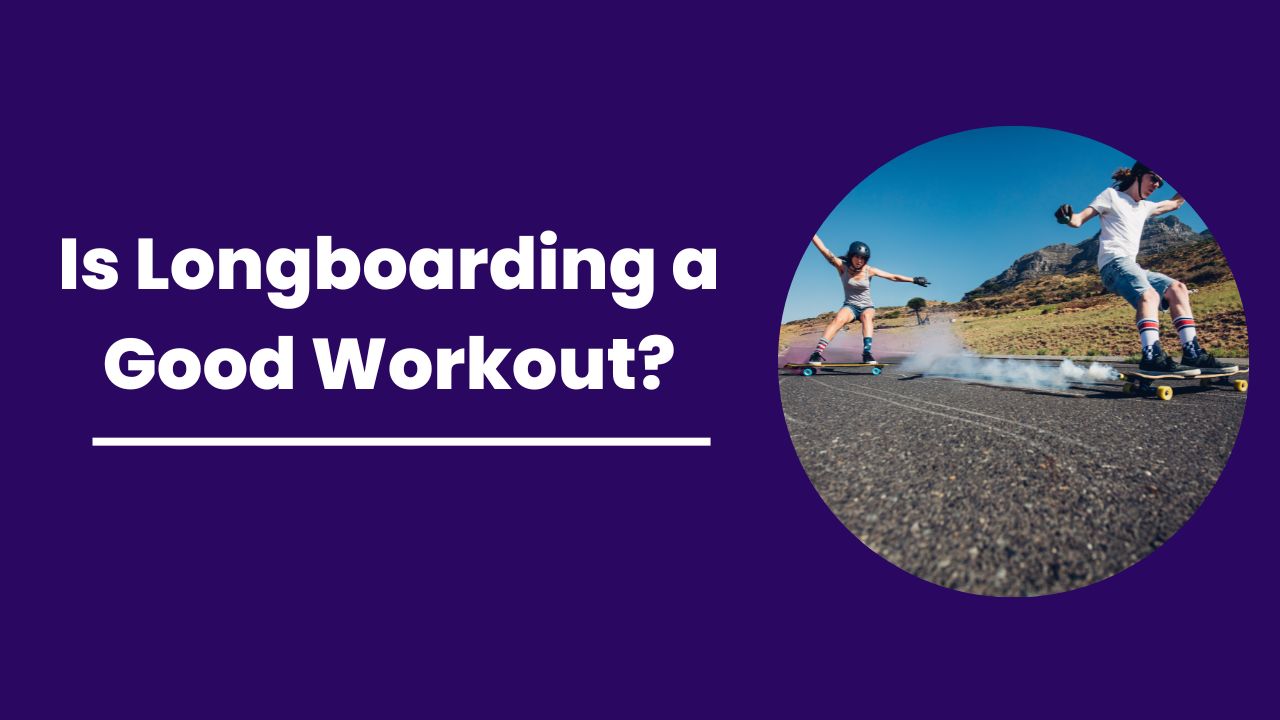Well, if you are passionate about longboarding, it will not be a daunting task if you learn the basic skills and steps correctly and accurately. Most riders get into the game and take to the hills without knowing the basics; that would not be the right option.
So if you want to know all about the skills and techniques for longboarding, this post will help you.

Contents
13 Essential Longboarding Tips For Beginners
We make a Unique list of 13 essential longboarding tips for beginners. we you follow and enjoy the longboarding.
Let’s start to discuss One by One:
1. Get The Accurate Longboard
The accurate board is a vast topic to discuss because the correct board differs for different riders based on their age, skill, size, weight, and riding goals.
It also depends on personal liking and choices as well. To get the board on which you can think, ride comfortably and have peace of mind.
2. Find Your Stance
Each person has different riding stances for different types of board sports; for a few people, it can differ from one spot to another. When you step on your longboard for the first time, standing on the left foot forward and the right foot at the back will be best. Then you are a regular rider, and if you place your left foot backward, you are goofy.
As you start to ride on a longboard, this is the first thing you must learn. A classic and unique way to stand on the ground is by placing your feet together and someone pushing you from the back. You will notice which foot you will put naturally to come forward to keep yourself stumbling.
You might think that is why stance is essential. Being a regular rider, while riding on your longboard, pressing on your toes will force you to turn right while pressing on the heels will make you on the left.
Therefore, if you are goofy, it will be vice versa.
3. Find Your Balance In Static Mode
If you are a learner in longboarding, you want to get comfort at the extreme and balance to start moving forward. A great way to practice your longboarding is on a thick carpet or grass to prevent friction from rolling. Stand on the long static board and get your natural stance; your feet should be at the distance of your shoulders, width apart, or a bit wider, depending on the length of the longboard; your feet should be close to or on top of the bolts of the truck.
If you’re a regular rider, your back foot should be perpendicular to the deck, and your front foot will be slightly angled with the deck roundabout at 45 degrees. Lean forward by bending your knees and getting a lovely and stable feel.
4. Practice Your Turning Stance
When you stand on the still longboard in the grass, the wheels of the longboard will not roll, but the deck will lean to the sides when you shift your body weight around it. So to make your deck lean, practice rolling back and forth with your ankles on each edge; in this, you will turn while riding.
In the next step, you make the deck lean by locking your ankles and shifting your body weight forward for toes and backward for heels. If you want to go one step ahead in static training before taking it to the streets, you should opt for the balance board.
5. Practice For Push And Brake Stance
It is an essential and critical skill to master for any longboarding option because you have to do this by standing on one leg when your other leg breaks or pushes. When you stand on your longboard on the carpet or grass, you should rotate your front foot by pointing your toes forward in the direction of the nose of the longboard. Simultaneously it would help if you turned your shoulders and hips forward.
By balancing your front leg lift the back foot off the deck. Your front foot will help you to stabilize when you turn forward. Shift your body weight on the front leg and bend your front knee towards your back foot onto the ground without moving your hips.
6. Learn Comfortably Rolling
When you learn the basic stance, pushing, and braking stance, down in the static mode will be easy to do. With the slight incline, find a driveway or parking. Stand on your longboard and get the gravity to get you rolled.
Now practice for the push stance, rotate your shoulders and the front foot in the forward direction, drop the rear foot on the ground give a slight push to give some momentum to your longboard. Therefore little speed will give you balancing and stability with ease.
7. Learn To Brake
The most important trick that is a practical and essential prerequisite is how to brake on a longboard. Foot braking is the initial skill to master the longboard. The steps for braking on longboarding are similar to pushing, but after you drop your feet back to the ground, despite kicking, you push the ground with the bottom of your foot to get the slow friction.
Make sure that when you reach the ground, you have a flat foot by lifting your foot slightly to prevent cracks on your foot. This skill is best learned at a low speed and gets more challenging when you go at a faster speed. One way to master this skill is to practice standing on one foot and square while rolling.
8. Begin To Ride On The Mild Hill
When you have learned about the foot brake on the flat, you will learn how to step on a slight slope. Find the one way that will not go across any street, either uphill or flat. At this level, you should get some protection, like wearing a helmet to protect yourself.
Similarly, go for the slide gloves having plastic pucks and knee pads to save your knees in case of falling. Trying elbow pads is also a good idea for beginners. Opt for sports shoes with sturdy soles for foot braking, as skate shoes are the best option for longboarding.
Do not ride on the longboard if you do not know the game’s basic skills. Opt for a very slight hill and go on at a slow speed. If you have the only option for a very sharp hill, go on the bottom slowly until you feel comfortable and confident because there is nothing worse than losing control on the steep slope and getting crashed only because you are not ready and skilled.
9. Practice Turning
Practice the turning skill first on flat ground, then on a steep slope. Before longboarding on the hill, you should tighten the longboard trucks to make the longboard less turn. The same will be the process for longboarding on the grass by rolling your ankles and pushing down towards the edges of the toes and heels to move the longboard to turn left to right.
When you feel comfortable, lock your ankles despite leaning your whole body on the board rails, as your longboard will go towards your upper body and turn. By balancing your arms turn your head, shoulders, and hips in the direction of the turn.
10. Learn How To Fall
You might think the sounds are sometimes scary and weird, but while doing longboarding, you must fall sooner or later. It is essential to learn not to fall anyway to protect yourself from injury. When you fall during longboarding, despite putting your hands in natural inclination, you should learn to tuck your arms, land on your forearms, and roll on your sideways while rolling.
Moreover, tucking and rolling need practice, as trying on the pillows and exercising mats is a good option. While riding on the longboard, make your speed slow on your board when you feel you are going to fall. If you fall forward most of the time in the forwarding direction, not in the backward direction, you should not lock your elbows when you hit the ground.
11. Learn How To Slide
how slide on the longboard is not an easy one to do. Learning for a slide is when you start the longboarding. Not because it is fantastic to learn, but because it is the most effective way to learn how to slow down when you are going at a fast speed on your longboard.
There are various ways to slide that might be easy for you, as you can slide on the longboard with a down hand on the ground or see standing in a perpendicular direction on your longboard. If you are not going at a fast speed, sliding by standing up will be easy to learn with practice.
12. Learn How To Carve
Carving in the longboard means doing the turns in longboarding with success. When you ride down the slope, you will slow down your speed by carving or turning as sharply in the best possible way. In each turn, you will lean hard to scrub your wheels on the slope and dump off the speed.
Therefore to make the center of gravity low while carving, bend your knees and push them forward by putting weight on the toes and pulling you’re but outward to carve on the heel side.
13: Follow the Unwritten Rules of Longboarding
The most important tip for beginners in longboarding is to follow the game’s rules. When you are riding longboarding in the streets, or crowded areas, make sure to save yourself and the people around.
You should be courteous and friendly to the neighbors and pedestrians and convey the positive image of this innovative sport vs. the traditional image linked with longboarding.
Read More:
- Drop-through vs Pintail Which 1 is Best?
- Longboard vs Skateboard Which One is best for You?
- Is longboarding hard?
- What are the best longboards for cruising?
- What Is Carving On A Longboard?
Conclusion
So this was all about the essential tips for longboarding for beginners as these are useful and best to protect yourself and others. I try to explain the tips and skills of longboarding that should be necessary for every beginner to learn and practice.
The sequence you opt for will depend on your previous skills, personality, and personal learning speed.
Are Longboards Or Skateboards Good for Beginners?
Compared to skating, longboarding is said to be simpler. Since longboards are longer than skateboards, maintaining balance is simpler. In addition, longboard wheels have a stronger grip than skateboard wheels, which tend to have tougher wheels.
Whose Skateboard or Longboard Bearings Are The Fastest?
The name of the company means everything to Bronson Skateboard Bearings. The fastest, strongest, longest-lasting, and longest-spinning skateboard bearings ever created, according to their advertising, are their bearings.
Should Longboards Have Unique Bearings?
The bearings on skateboards and longboards are identical. The bearings are the same size whether you skate on a longboard or a street skate, regardless of the size of your wheels. The size of the bearing spacers is the only thing you should be concerned about.
Which Is The Simplest and Easiest Board To Ride On?
For novices, longboards are a popular choice since they are the simplest to ride right away. Because drop-through boards decrease the riding height for greater stability and simpler pushing, they are even more user-friendly for novices. It’s crucial to consider your personal size when selecting the length of the longboard.
How Long Should A Longboard for a Novice Be?
Your first longboard surfboard should be around 9’4″ in length and 23″ wide. The maximum width you can surf at is 23 inches if you’re a larger surfer. You may narrow the board down to 12 inches if you’re a smaller surfer. Additionally, your novice longboarder should weigh between 15 and 17 pounds.

